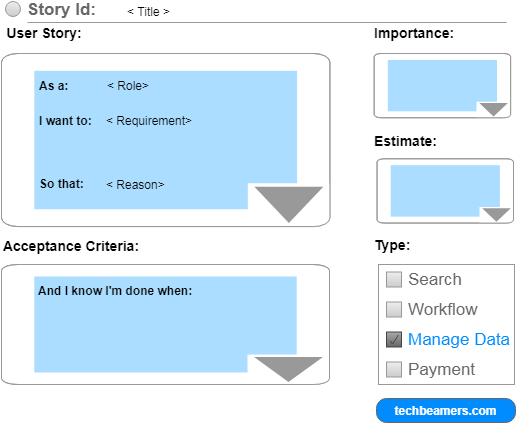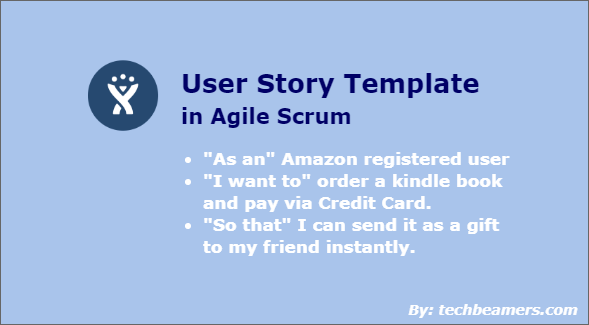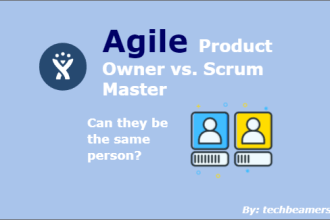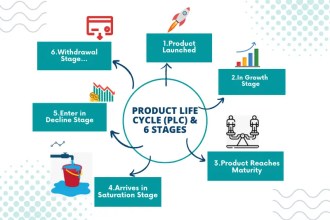In this post, we’ll explain a simple and useful Agile user story template that helps define objectives clearly and easily.
Define User Story Template
A user story in Agile is a clear way to describe what a customer needs. Let’s understand the user story template in detail and also check up on some of the standards used globally.
What is a User Story Template?
A user story in Agile represents a refined form of some customer requirement. The Product Owner (PO) should first know exactly what they want to achieve. And after that, he should define it precisely. Hence, here comes the concept of user story templates. It is a standard format that POs can use to create user stories. It allows them to include every bit of information mandatory for development.
The most common user story template used by Agile teams is given below. It contains phrases like “As a___ I want to___ So that___” that reflect the persons, requirements, and the objective.
- The first thing, the template conveys WHO is requesting the feature. It uses the “As a” clause to mention the person.
- Next, it describes WHAT to implement by using words like “I want to” for clarity on the requirement.
- Also, the template includes “So that” that justifies WHY you need this feature.
Let’s try to elaborate using an example.
- “As an” Amazon registered user
- “I want to” order a Kindle book and pay via Credit Card.
- “So that” I can send it as a gift to my friend instantly.

What is the 3Rs User Story Template?
The 3Rs is nothing but another name for the user story template that we just defined above. The 3 “R” representation is as follows:
- First R refers to the Role of a person.
- The second R signifies the Requirement or the business goal.
- The third R implies the Reason or the cause.
Moreover, we can also refer to it as Connextra format. Initially, it was the imagination of one of the teams who worked at Connextra.
Benefits of Using the Template
Since agile is all about better communication and quick feedback, this template makes people understand in their native dialect. It gives a clear message and explains to them what to do, and also tells who is it for and why they need it.
Note: In Agile, stories go through grooming, where the team discusses solutions and reviews unknowns. And, that’s why the templates don’t intend to include micro details. However, it could turn a little harder for teams who recently adopted Agile.
Common Mistakes
Teams new to Agile, especially those who used old methods like SDLC before, may struggle with the user story template.
Remember, the template isn’t just a work statement but a tool to express ideas clearly. It’s not meant to include every detail but to start a discussion during the grooming process. Their purpose is to express the idea clearly and naturally.
Additional Resources
Here are a few more resources to dive deep into the Agile framework.
Product Owner vs. Scrum Master
Scaled Agile Framework (SAFe)
Before You Leave
We hope that after wrapping up this tutorial, you are ready to use the most common User Story Template for your projects. However, you may learn more about Agile by reading the below article.
Before you leave, you must check out the most frequently asked Agile Interview Questions for Software engineers.
Finally, to keep our site free, we need your support. If you found this tutorial helpful, please share it on LinkedIn or Facebook.
Enjoy learning,
TechBeamers.






